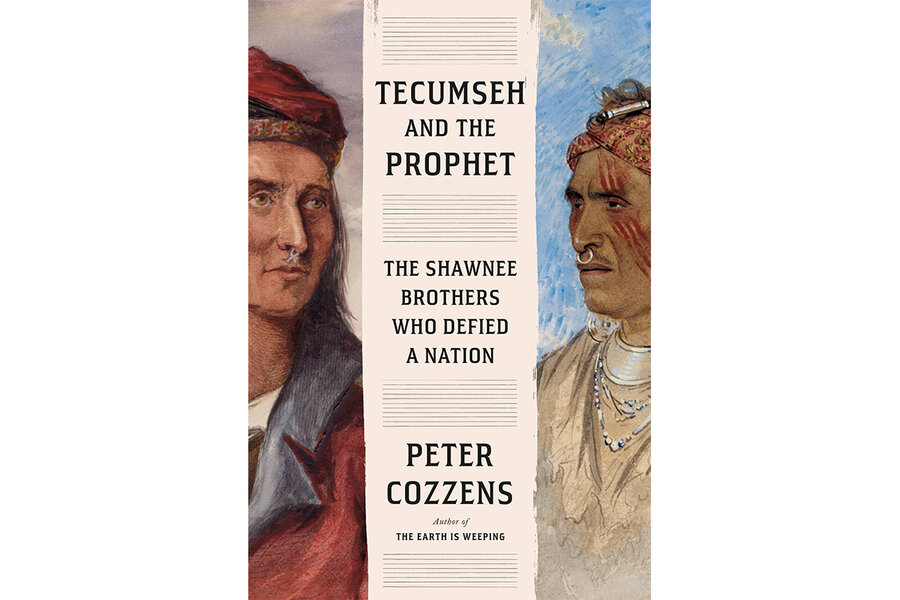‘Tecumseh and the Prophet’ shines a light on Native American resistance
Loading...
Peter Cozzens, author of 2016’s brilliant history “The Earth is Weeping: The Epic Story of the Indian Wars for the American West,” concentrates his new book on the Shawnee people, one of the many Native American nations that fought to preserve their autonomy and ancestral lands from the expansion of the United States. In particular, Cozzens is interested in two men from that nation: the great political and military leader Tecumseh and his brother Tenskwatawa, who was the spiritual “Prophet” of his people. “Tecumseh and the Prophet: The Shawnee Brothers Who Defied a Nation” seeks to tell the dual stories of the siblings.
Most earlier biographers chose to adopt – uncritically – the opposite-ends characterization of the brothers that originated with U.S. Indian agents and jingoistic early propagandists. That original picture tended to paint Tecumseh as handsome, eloquent (his skill as an orator is universally attested), noble, self-sacrificing, and completely dedicated to leading his people to independence from the imperialist encroachment of the U.S. government. As if to counterbalance this image, those earliest accounts portrayed Tenskwatawa as a drunken savage – an image that would become one of the 19th century’s most hateful stereotypes. He was portrayed as a weak, envious, schemer who was disowned by his brother and cast out from his people. This is the contrast presented, for instance, in Allan W. Eckert’s bestselling 1992 doorstop “A Sorrow in Our Heart: The Life of Tecumseh,” and Cozzens notes that it only really began to be discarded in 1998 with John Sugden’s “Tecumseh: A Life” and other more specialist studies.
These later studies delved more critically into the importance of Tenskwatawa’s role at the center of the sweeping religious revival that galvanized not only the Shawnee but all of the embattled indigenous nations facing attack and forcible relocation. Tenskwatawa became the spiritual leader of that movement, and in “Tecumseh and the Prophet,” Cozzens goes further than any previous biographer in assessing that importance: He posits that without the prophet, there would have been no Tecumseh.
Cozzens expertly mines the surprisingly varied array of sources for the brothers’ early lives; he presents the fullest picture yet of who these men were before they achieved national fame. His book balances them more than any previous retelling of the story ever has. “Tecumseh and the Prophet” is as close to a fully realized popular biography of Tenkswatawa as is ever likely to be written, but it’s still overwhelmingly Tecumseh’s story.
And it’s an epic tale. Through sheer force of personality, Tecumseh managed to forge a sprawling confederation of Native Americans and make a series of demands – many of them necessarily at gunpoint – for the return of tribal lands and the honoring of treaties. Tenskwatawa and his allies fought and lost the Battle of Tippecanoe in 1811, and in the following year Tecumseh joined his considerable forces with those of the British during the War of 1812, gaining the admiration of his British allies generally but winning precious little else. At the Battle of the Thames in Canada on Oct. 5, 1813, Tecumseh was killed and his body was scalped and despoiled before it could be definitively identified by his lifelong opponent, former Indiana Territory governor and future U.S. President William Henry Harrison.
Cozzens wrote about these kinds of topics – treaty betrayals, desperate battles, doomed last stands – on a broad scale in “The Earth is Weeping,” but in these pages he’s able to indulge more fully in the interplay of personalities. Harrison is thoroughly the villain of the piece, always venal and vicious, always untrustworthy and unsympathetic. And Tecumseh is equally thoroughly the hero of this story, fierce and uncompromising in the face of the oncoming juggernaut of American land-hunger.
And although Cozzens assures his readers that “Never had Tecumseh expressed anything short of absolute fidelity to Tenskwatawa’s doctrine,” the book is not quite convincing in its attempts to elevate the prophet to equal status with his warrior brother. Even while Tecumseh is still alive and inspiring everybody around him, Cozzens can still easily refer to Tenskwatawa as “a former drunkard and village laughingstock who had never led a single warrior in battle.” And after Tecumseh’s death and the subsequent collapse of his brother’s religious revival movement, Cozzen’s depiction of him converges very closely on all those earlier contemptuous biographical treatments: “In Tenskwatawa’s calculus, the pan-Indian unity for which his brother had given his life was secondary to his own survival and that of his adherents,” Cozzens writes. “He would compromise and connive, beg and badger – whatever it took to keep going.”
Cozzens treats all of this in wonderfully powerful rhetorical detail. “Tecumseh and the Prophet” paints in vivid colors the grandest effort of Native Americans to retain their independence – and the political and spiritual leaders who tried to make it happen.






